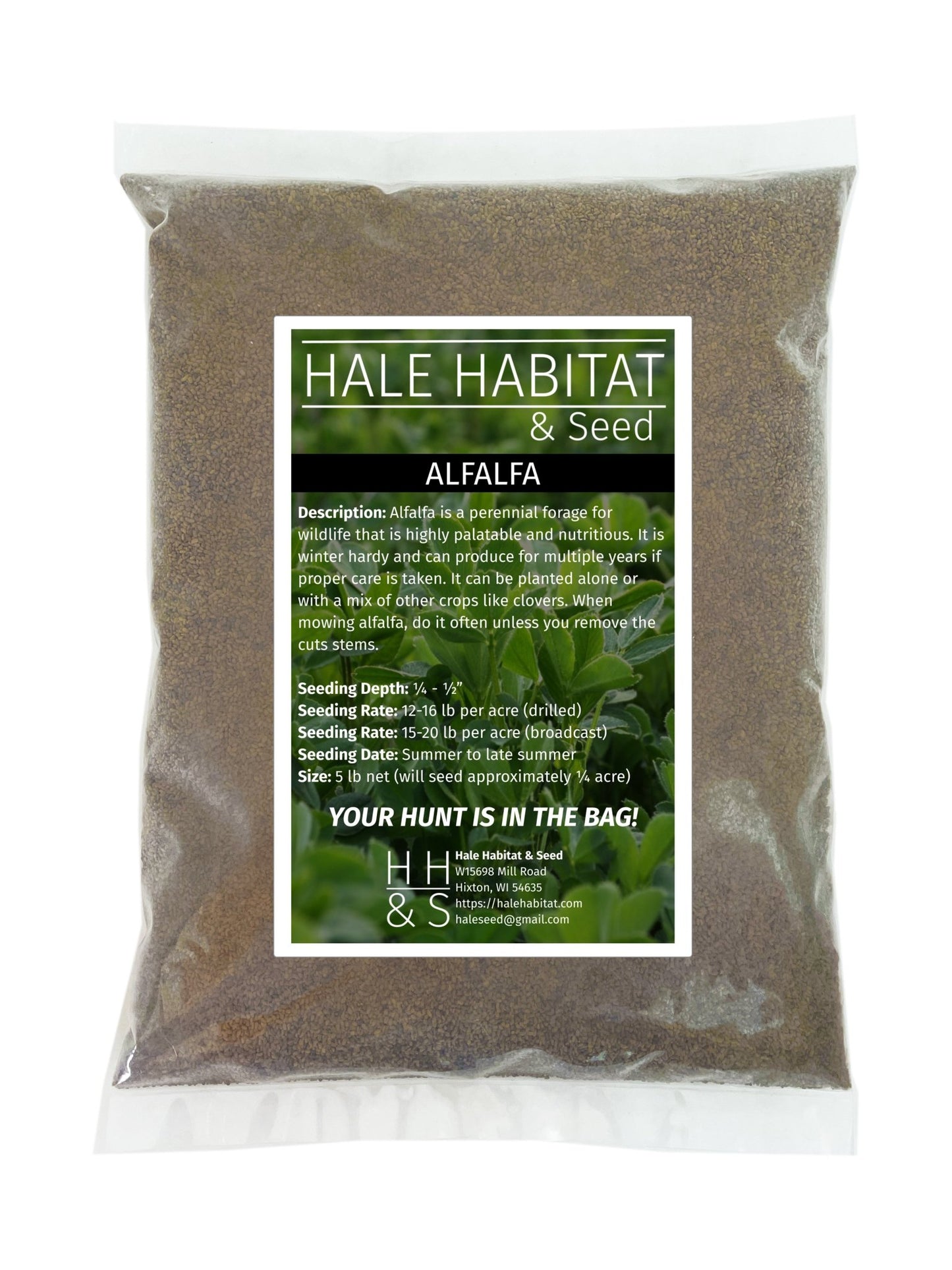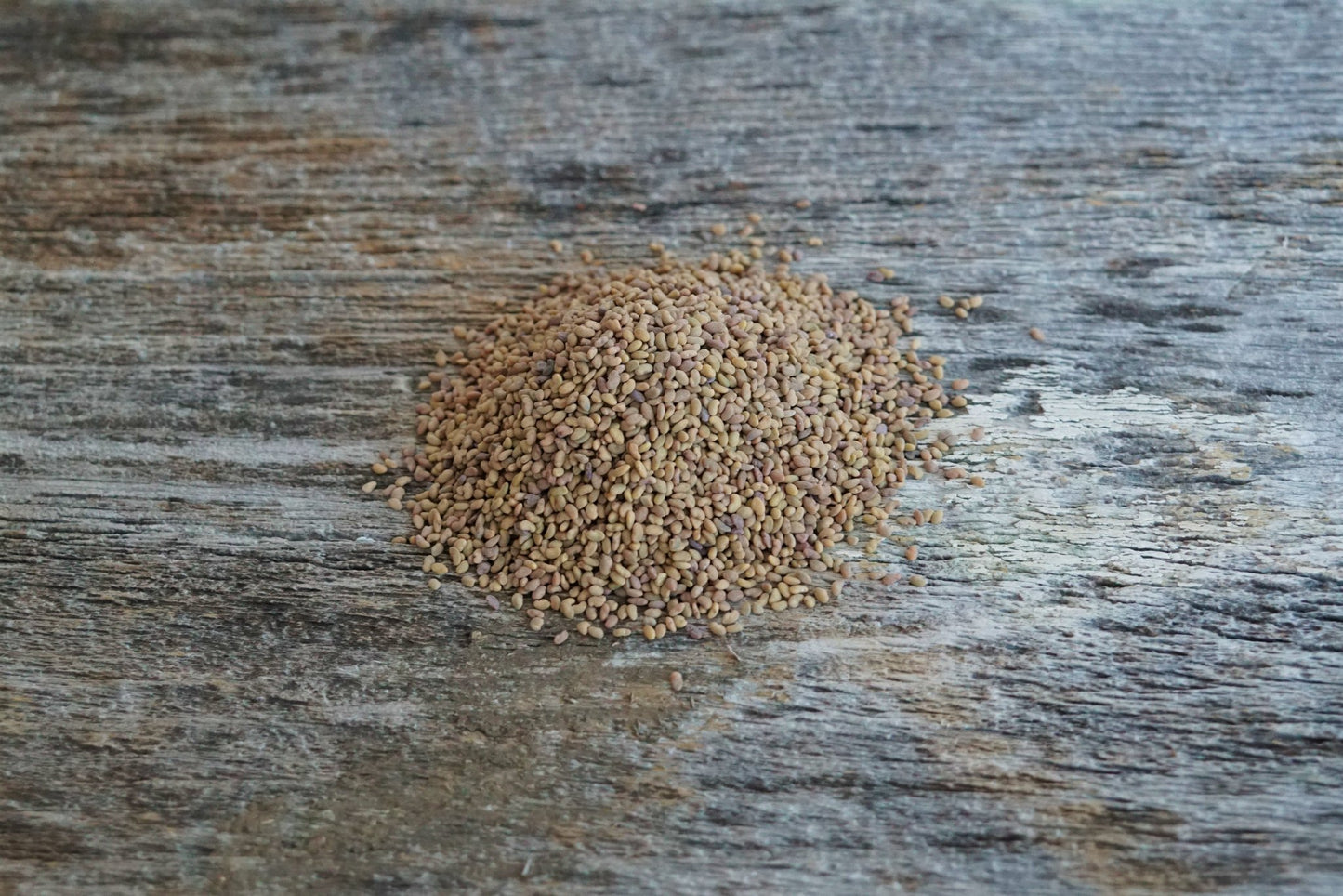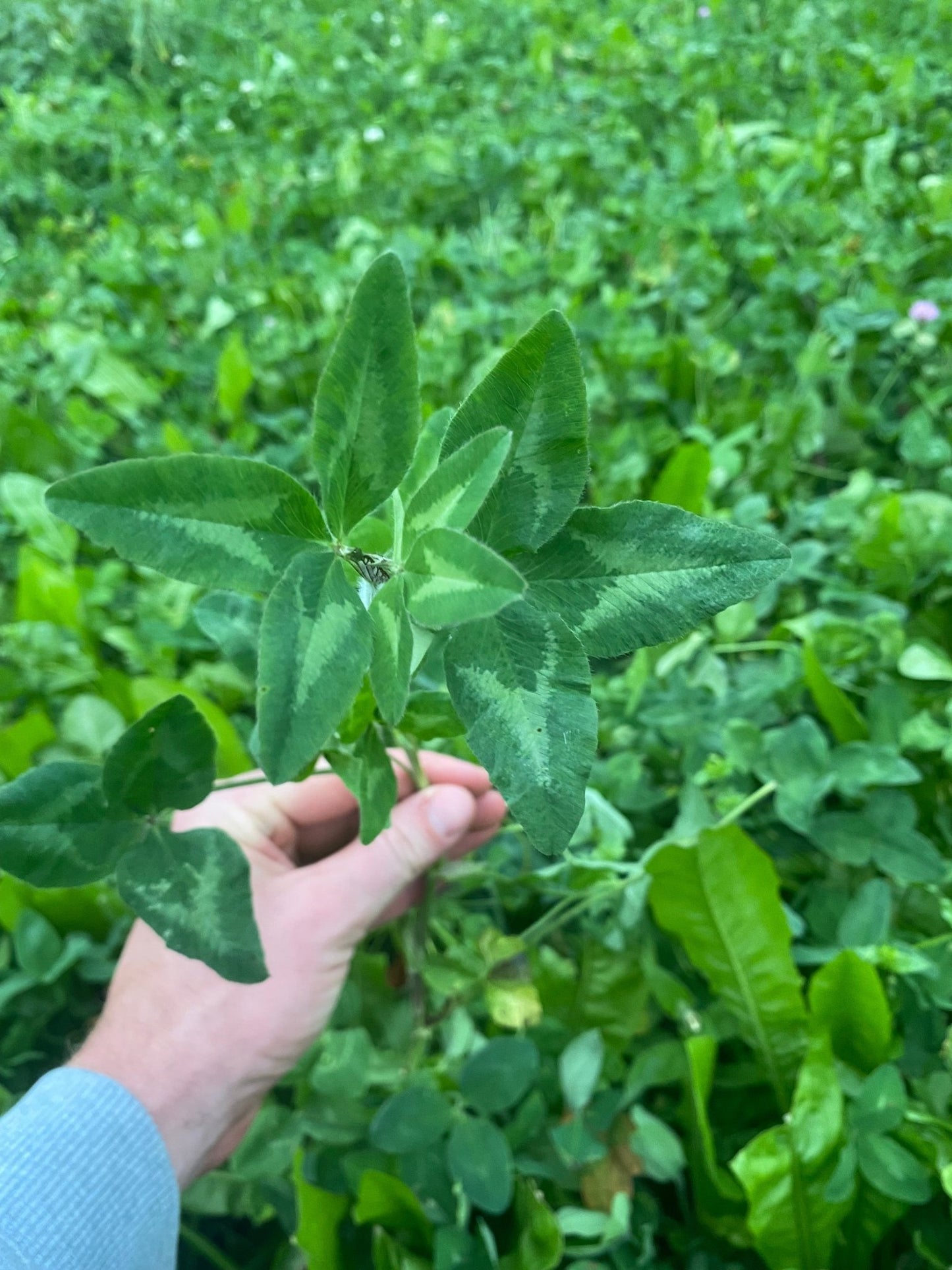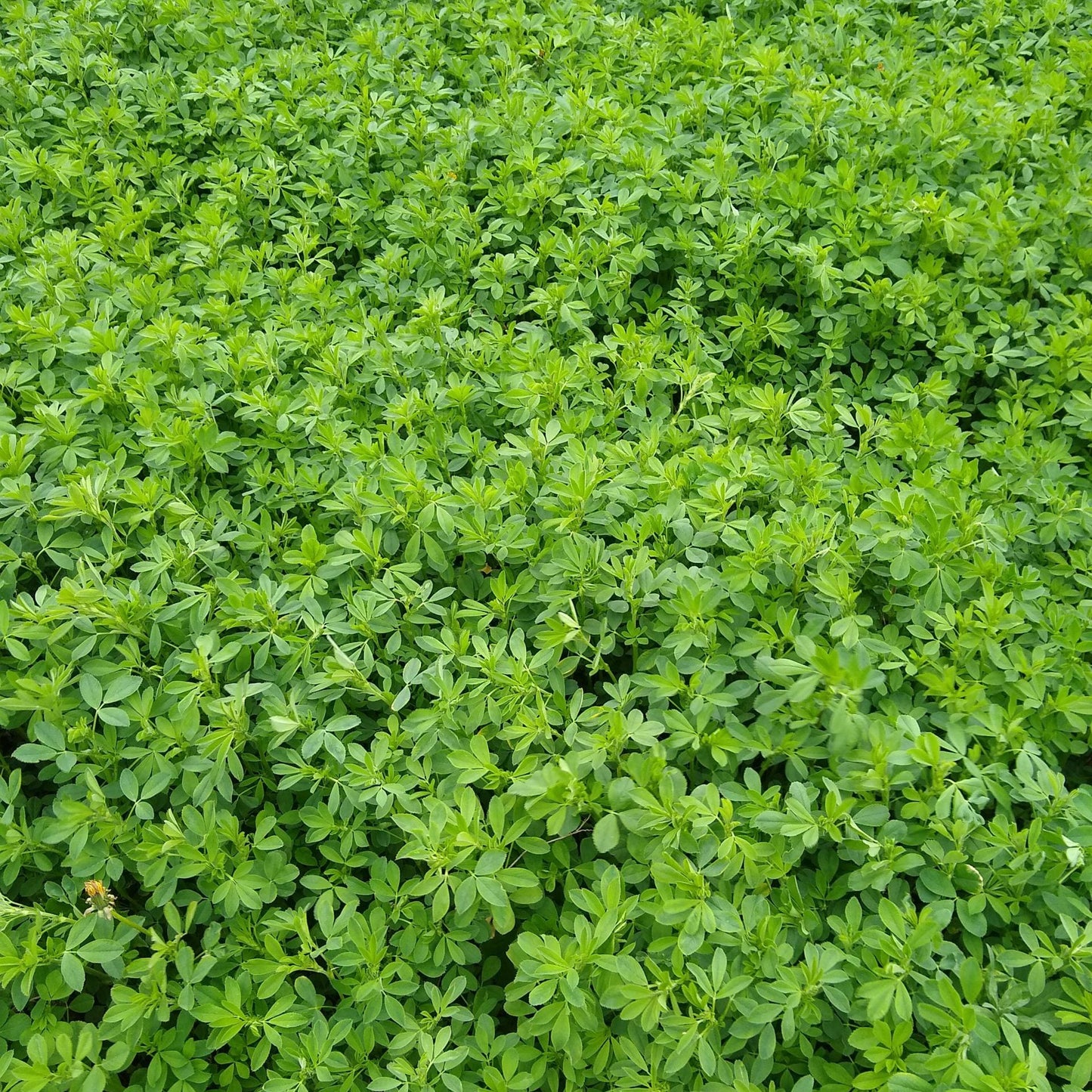Hale Habitat & Seed
Alfalfa (Vernal, pre-inoculated)
Alfalfa (Vernal, pre-inoculated)
FREE SHIPPING!
Couldn't load pickup availability
Alfalfa (Medicago sativa) is a nutrient-rich, perennial legume widely grown for livestock forage and wildlife food plots. It provides high protein, long-term forage production, and soil improvement through nitrogen fixation.
Benefits for Wildlife
✔ High protein content (15–25%) supports deer, turkey, rabbits, and pollinators.
✔ Long-lasting perennial (3–5+ years) with proper management.
✔ Drought-tolerant due to deep root system.
✔ Attracts pollinators and small game while improving soil health.
Planting Guidelines
-
Planting Times:
- Spring: March–May (after last frost).
- Late Summer/Fall: August–September (at least 6 weeks before first frost).
-
Seeding Depth: ¼ to ½ inch (shallow planting is essential for good germination).
-
Seeding Rates:
- Drilled: 12–15 lbs per acre using a no-till or conventional drill.
- Broadcast: 18–20 lbs per acre, followed by dragging or cultipacking for soil contact.
-
Days to Maturity: 60–70 days for first full bloom, with multiple cuttings per season.
-
Drought Tolerance: High – Deep roots help withstand dry conditions.
-
Saturated Soil Tolerance: Low – Does not tolerate waterlogged conditions. Prefers well-drained soils.
-
Shade Tolerance: Low – Requires full sun for optimal growth.
Fertilization Guidelines for Alfalfa
Alfalfa requires proper fertilization to maintain high yields, improve persistence, and support its nitrogen-fixing ability. Since it fixes its own nitrogen (N), fertilization focuses on phosphorus (P) and potassium (K).
Key Fertilization Needs
- Soil pH: 6.5–7.0 (Apply lime if pH is below 6.2).
- Phosphorus (P): 40–80 lbs P₂O₅ per acre per year for strong root development and energy transfer.
- Potassium (K): 150–250 lbs K₂O per acre per year to improve winter survival and disease resistance.
Fertilization Timing & Application
- Pre-Plant: Apply P, K, and lime based on soil test results.
-
Annual Maintenance: Top-dress P, K, and S in fall or early spring.
Herbicide Use for Alfalfa
Proper weed management in alfalfa is essential for maximizing yield and stand longevity. Herbicide selection depends on whether the crop is newly seeded or established, and if it is dormant or actively growing.
Key Herbicide Types & Timing
-
Pre-Plant & Pre-Emergence (Before or Just After Seeding)
- Eptam (EPTC) – Incorporated before planting for annual grass and some broadleaf weed control.
- Balan (Benefin) – Pre-plant incorporation for small-seeded broadleaf and grass weed control.
-
Post-Emergence (After Alfalfa Emerges or in Established Stands)
- Raptor (Imazamox) – Controls grasses and broadleaf weeds in seedling or established stands.
- Pursuit (Imazethapyr) – Selective broadleaf and grass control.
- Velpar (Hexazinone) – Applied during dormancy for winter annual weed control (avoid sandy soils).
- Metribuzin (Sencor) – Used during dormancy for residual broadleaf weed control.
- Gramoxone (Paraquat) – Burn-down herbicide for dormant alfalfa before spring regrowth.
Key Considerations
- Check labels for timing and rates based on alfalfa growth stage.
- Avoid herbicide injury by following soil and weather recommendations.
- Rotate herbicides to prevent weed resistance.
Share





Sprouted and growing nicely, which is amazing considering the nasty, rocky, sandy clay soil that I threw the seed on without any preparation. Believe me, if it will grow here, it can grow anywhere. The only logical explanation is that someone at the seed company has a magic wand.
Good packaging
Small seed, difficult to know precisely how much you are spreading. Covered my 1/2 acre. Waiting for rain to see how it germinates
Great value! Will buy again. Great company to buy from.
Excellent product. Seeds produce well. And you can't beat the price!
Excellent product. Seeds produce well. And you can't beat the price!





